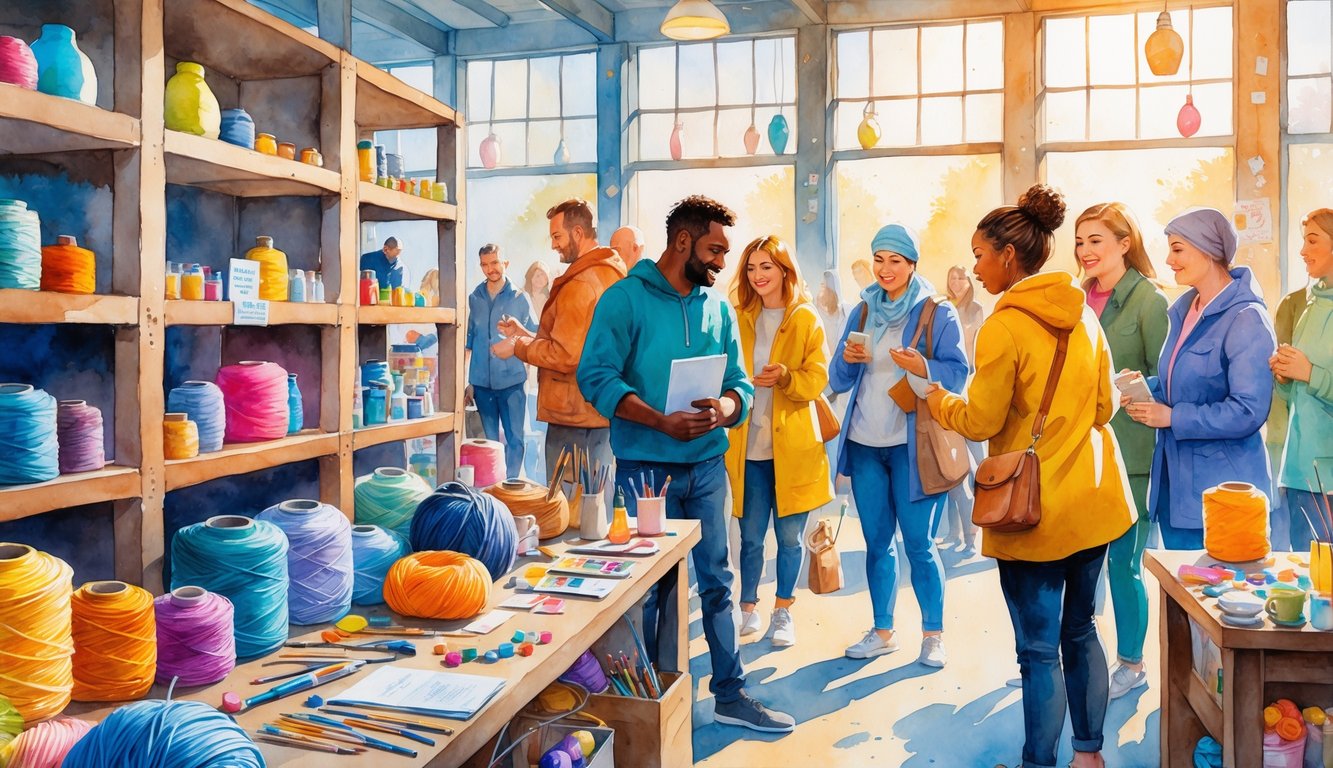
Prices: Up, Up, and… Still Up

So, glue sticks and yarn used to be everywhere, and now it’s a treasure hunt. Two-day shipping? Ancient history. I used to think these price jumps were theoretical—now my unfinished projects have their own graveyard because the supply chain doesn’t care about my plans.
Sticker Shock: The New Normal
The price at checkout? Brutal. I ditched my favorite fabric for generic, which bled in the wash, and my cousin’s dog ate the felt anyway. So, who’s winning? Supposedly, the global arts and crafts market is up—from $45.28 billion to $74.27 billion by 2033. Sounds great until you see what $20 gets you now. Industry expects 5.6% annual price hikes. Some economist said, “Producers gain leverage when shortages push prices up.” Here’s the report. In reality, “leverage” just means more DIY, not better stock. My friend says diversify your sources, but even wholesale prices quietly creep up.
Some people pool orders or swap leftovers, but it always costs time or convenience. My neighbor, who’s obsessed with upcycling, tried cheap thread for cross-stitch—held together for five washes, then fell apart. The irony? Trying to save money usually backfires.
Delivery Times: The Waiting Game Nobody Wins
My last three orders? Lost in the Bermuda Triangle. Delivery used to mean “order Monday, craft Friday”—now it’s “maybe this season.” Shipping delays are so normal I barely notice. I get more “unexpected disruption” emails than coupons, and my local store can’t tell me when colored cardstock is coming back. No magic fix. Analysts said delays would end in 2023, but Forbes says shortages are still rolling into 2025. AI experts call it “volatile.” Accurate.
I plan projects around what might show up, not what I actually want. Even big box stores can’t keep delivery promises. Once, glitter jars took three weeks, but backup needles from a tiny Idaho shop arrived in two days. How does that even happen?
Manufacturers: Still Scrambling
I’m staring at spreadsheets, hearing someone complain about not finding a 5mm knitting needle for six weeks. Factories are behind, brands are making it up as they go, and priorities? Who even knows. Raw material hoarding, new tracking apps nobody understands, and random supplier swaps—welcome to crafting in 2025.
Companies Adapting Production
Okay, so lately every manufacturer I know—tiny Etsy shop, giant regional mill, whoever—has started hoarding the weirdest stuff. Zippers in colors that don’t even match anything, thread shades I swear only exist to taunt me. Risk mitigation, they call it. I just call it “maybe I’ll use this someday?” One supply chain analyst literally laughed at a 2022 production schedule, and honestly, same. Everyone’s terrified of running out, but if you over-order, you’re broke. Under-order? Good luck explaining that to customers who think you control the universe.
Real-time inventory dashboards everywhere. They’re supposed to be magic, but unless your team actually updates them (ha), it’s just a fancy spreadsheet. People are swapping suppliers at the last possible second—one artisan told me their felt crossed three continents in two months, which, I mean, is that even legal? Patterns get tweaked on the fly to dodge missing trims or elastic. I guess 2021’s shortages never left; manufacturers just got sneakier. Or maybe lazier. Who knows.
Private Sector Initiatives
Here’s the wild part: private companies keep pitching these “tech fixes.” Inventory management platforms, sure, but one CFO said he feels like he’s running an airline. I get it. Half the time, upgrading a conveyor belt means you’re reworking your entire process for a 2% bump. Everyone acts like it’s the moon landing.
Eco-friendly bulk buying is the new hot thing. Rival shops sharing a warehouse? I don’t get how they’re not suing each other, but apparently, climate disasters (remember the North Carolina tornado? The Pfizer supply shortage? Yeah, that) forced them to actually cooperate. Graphs mean nothing when your fabric is underwater.
Staff retraining is a nightmare. We did two sessions this spring; half the team still doesn’t know how to log in, but nobody leaves because supply chain pros are like unicorns. Did you know 83% of organizations had at least one supply disruption in 2022? I read that and just laughed.



